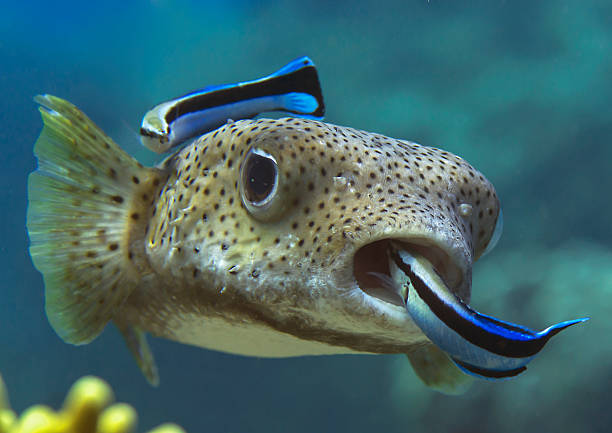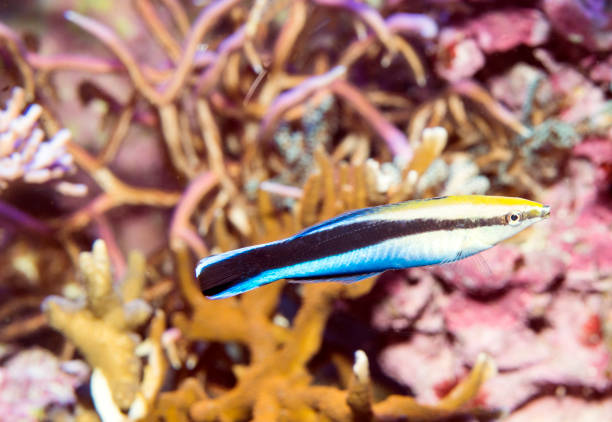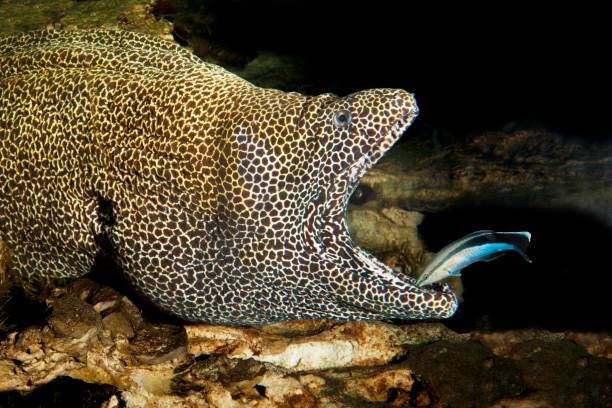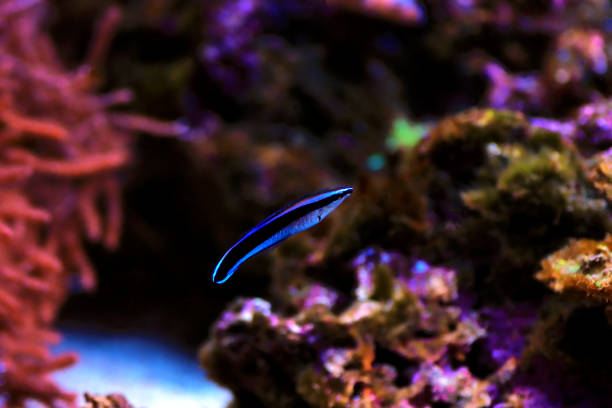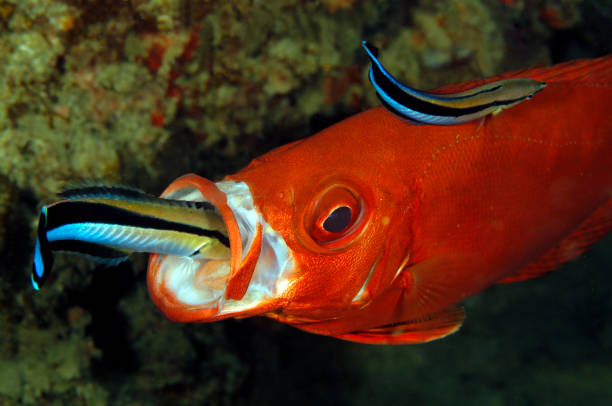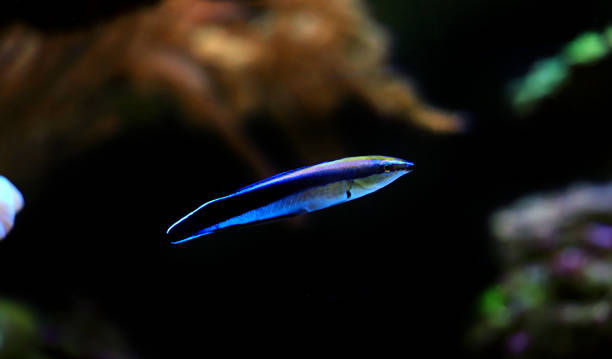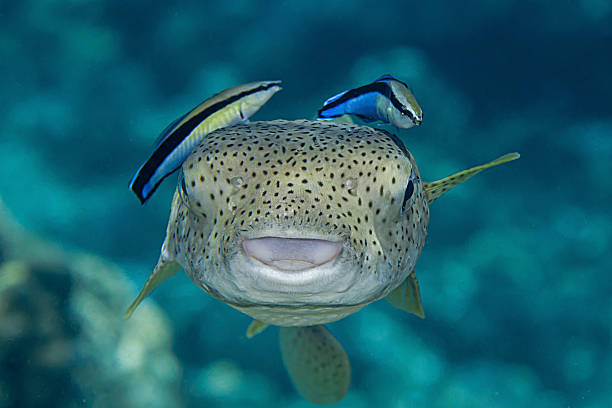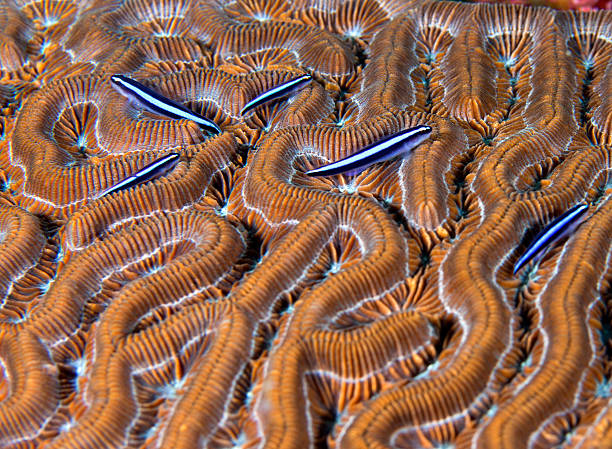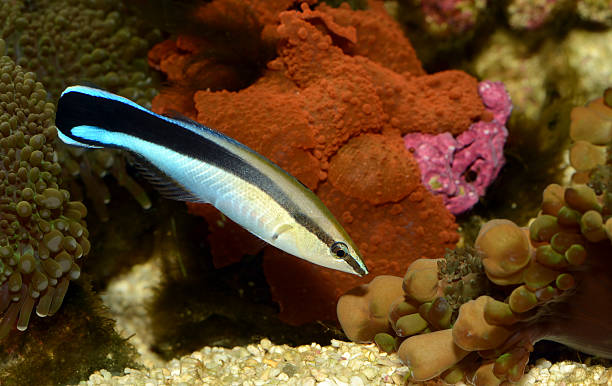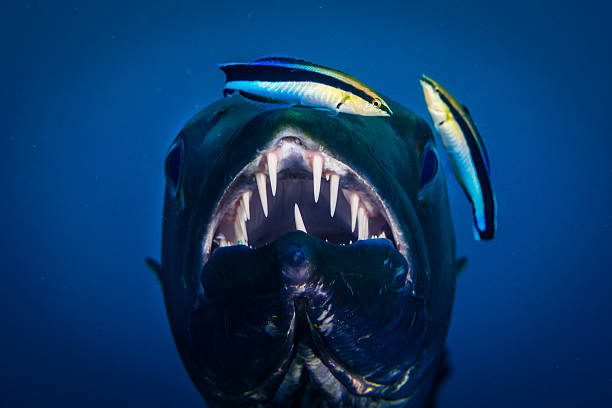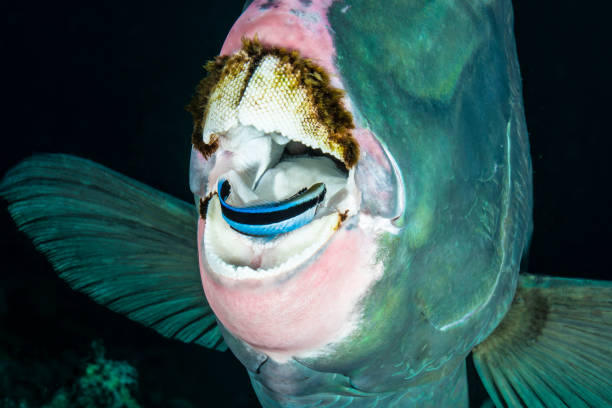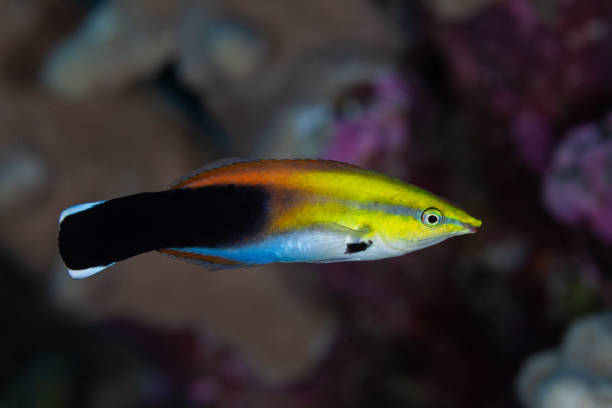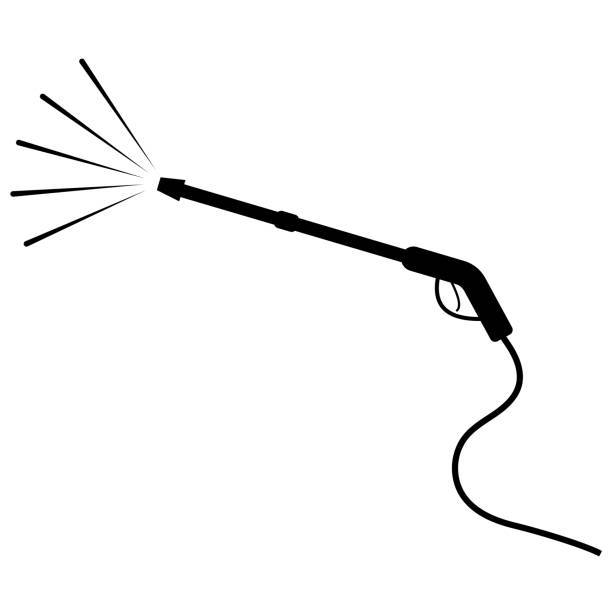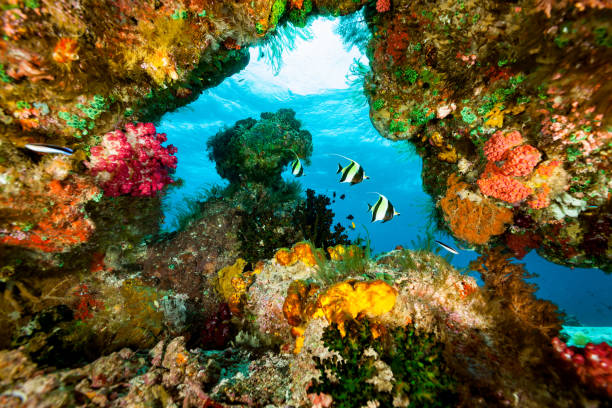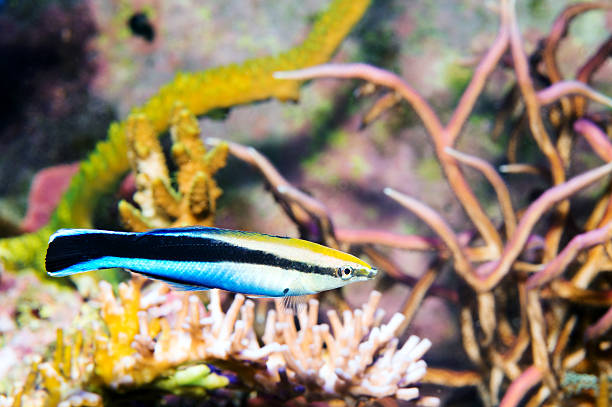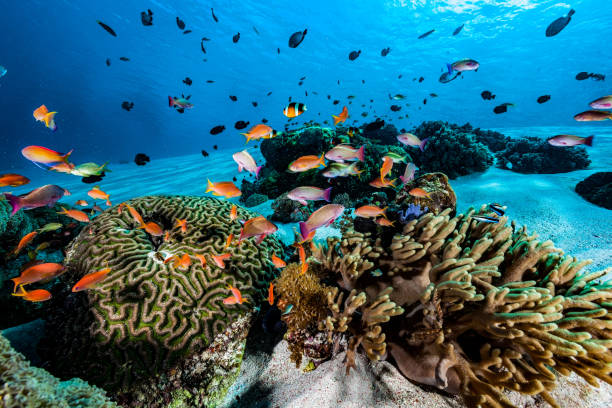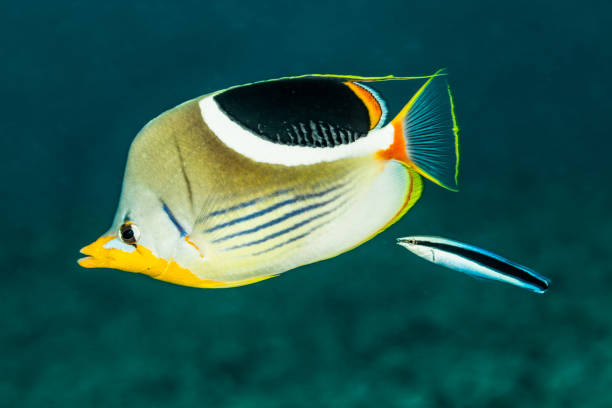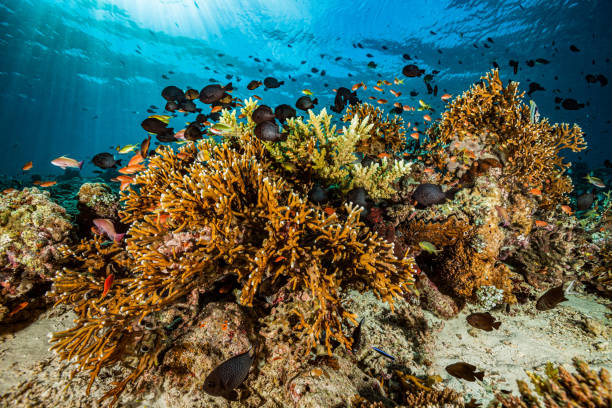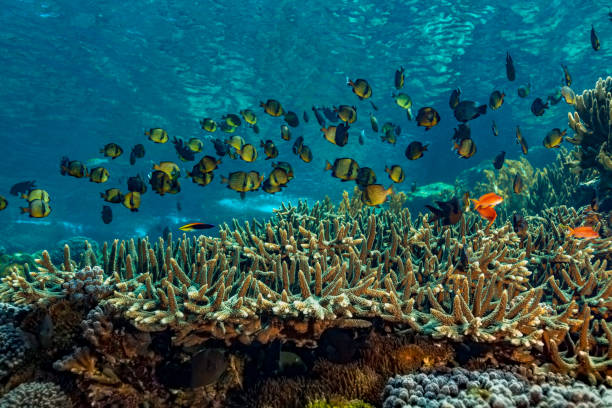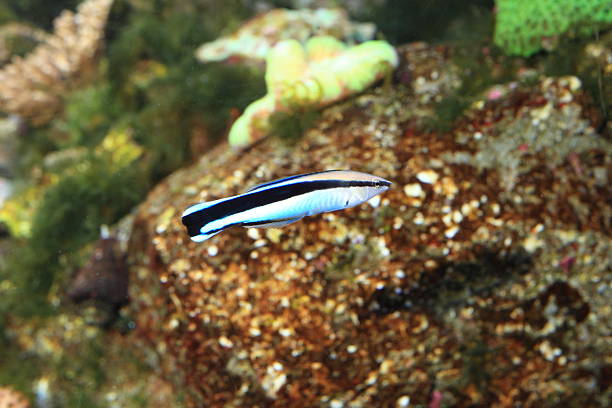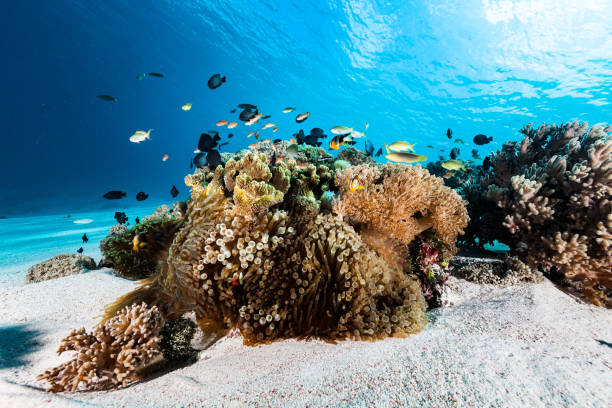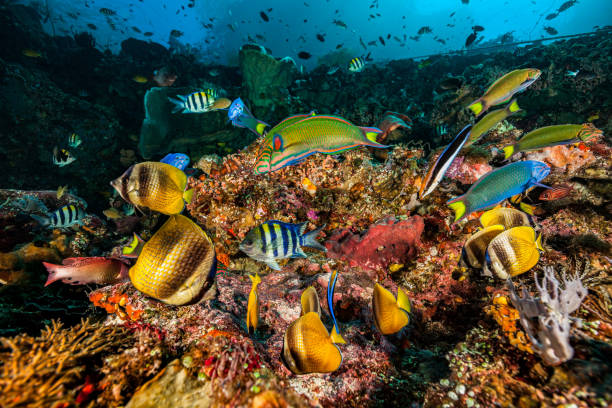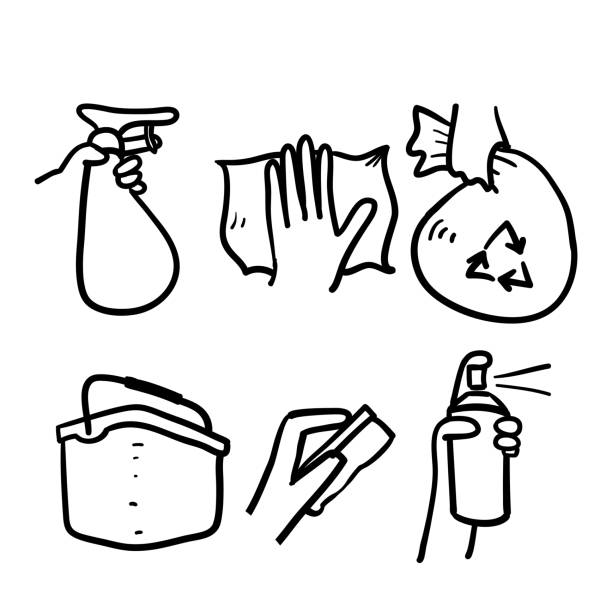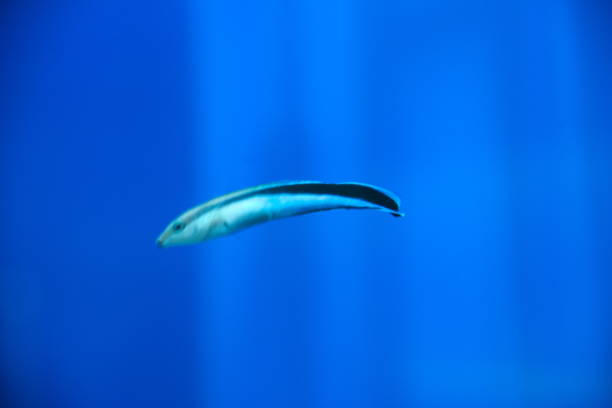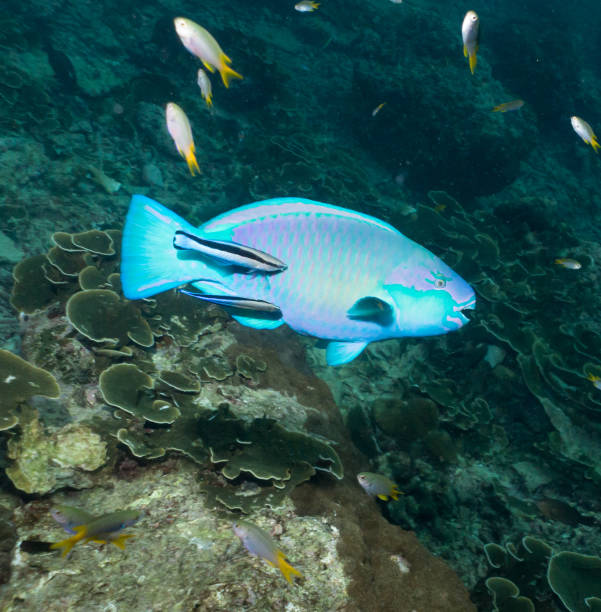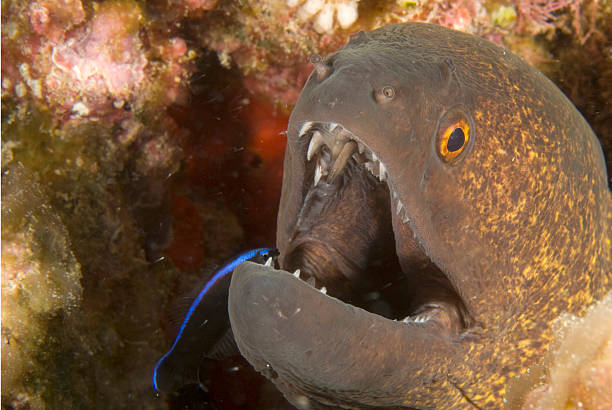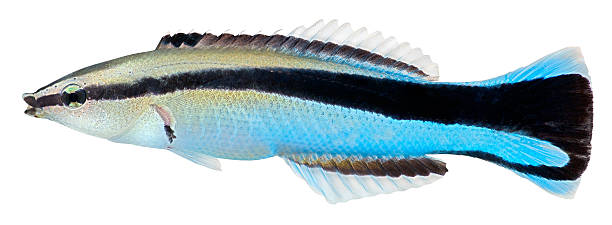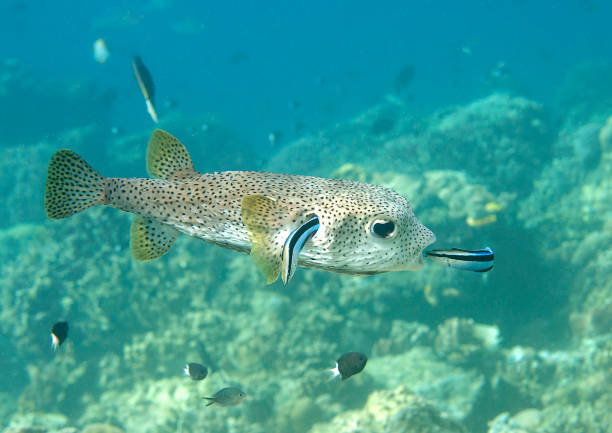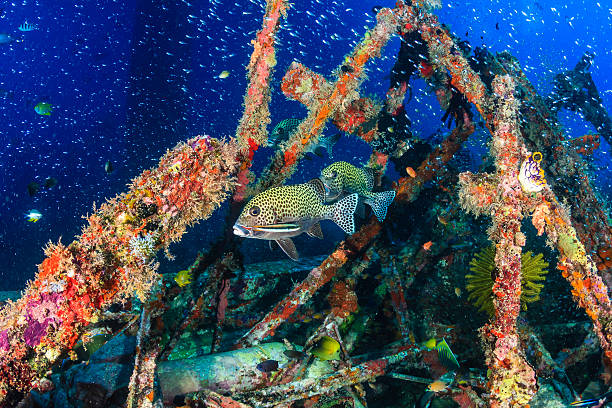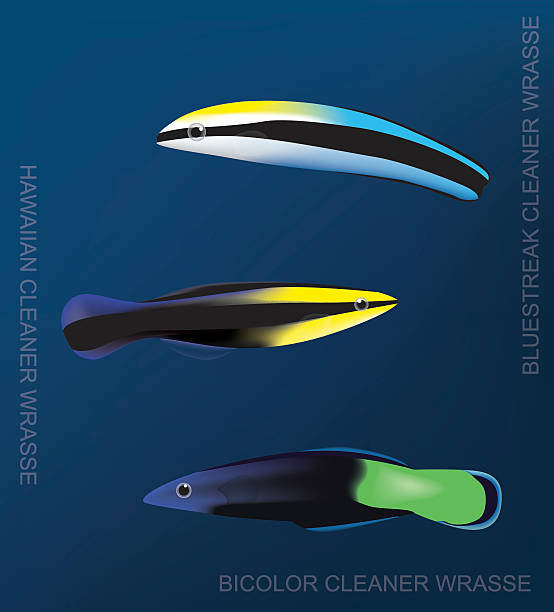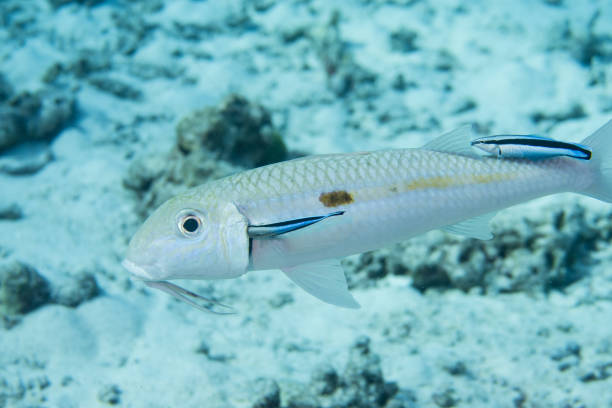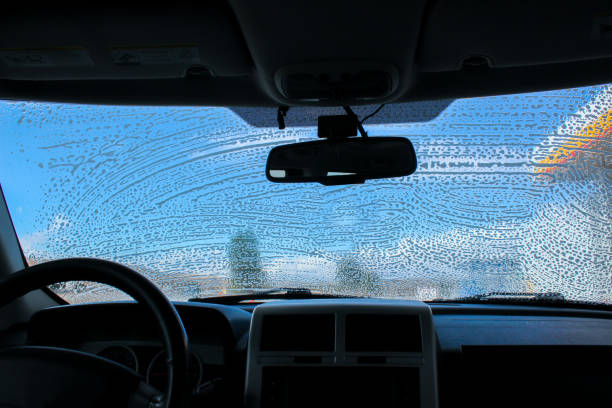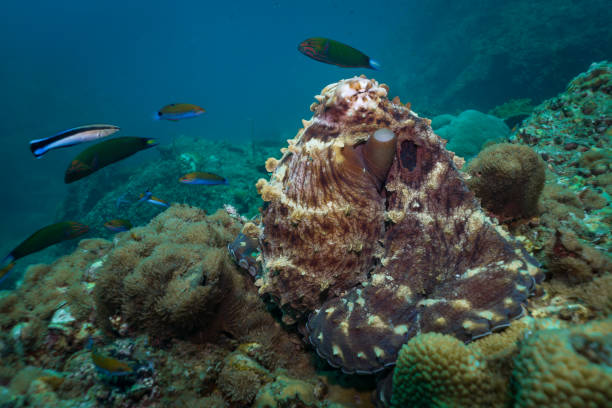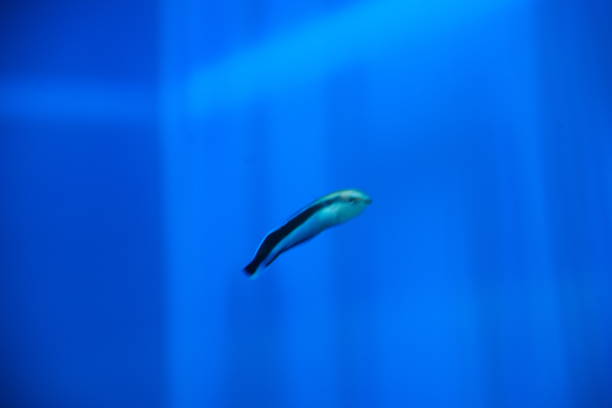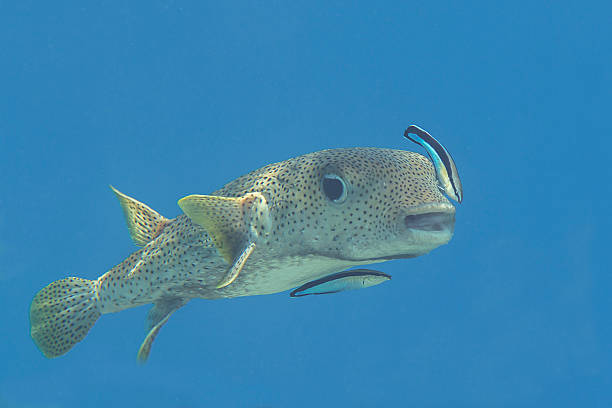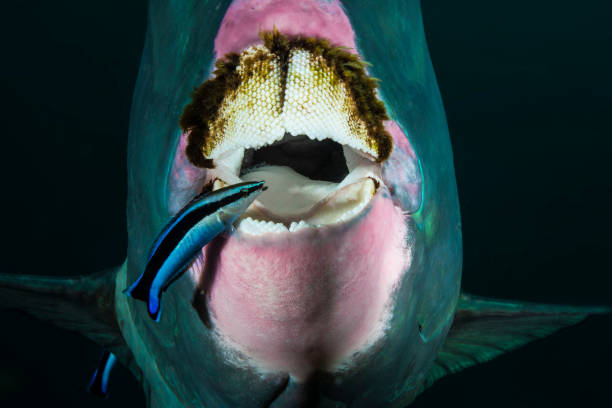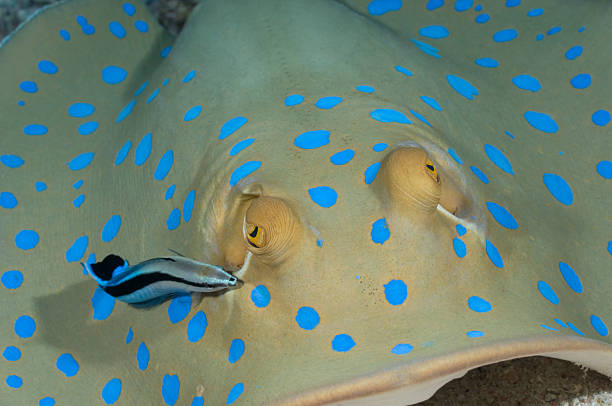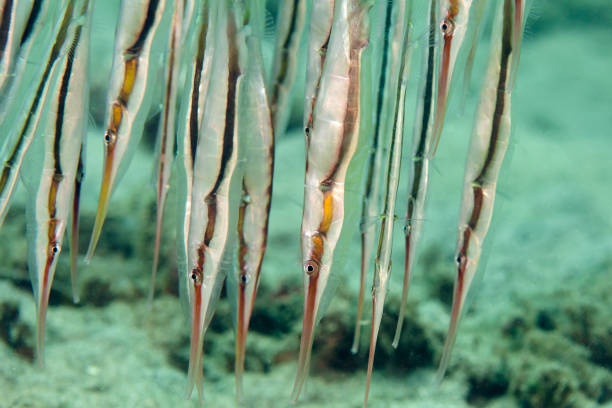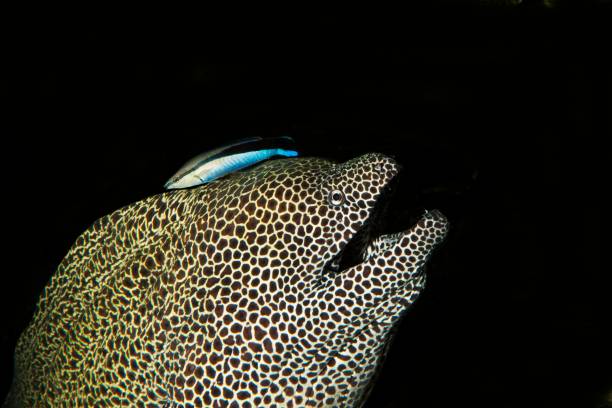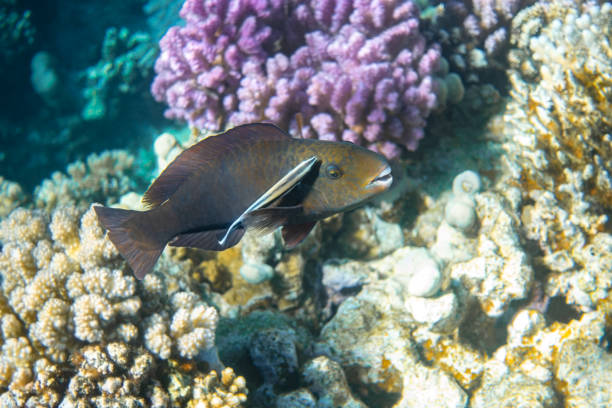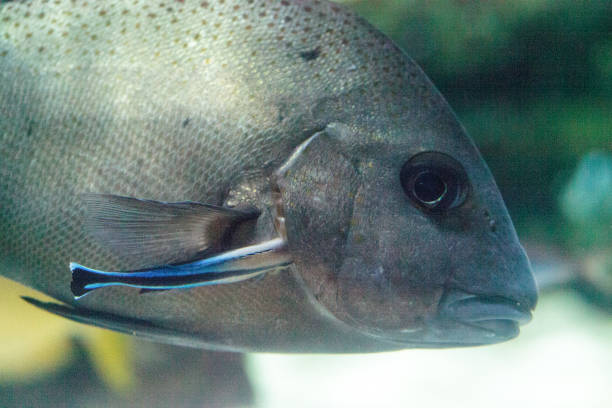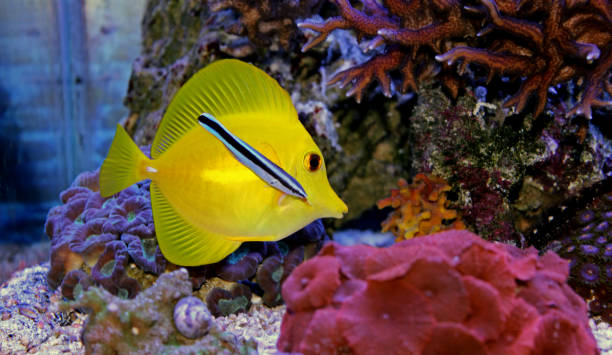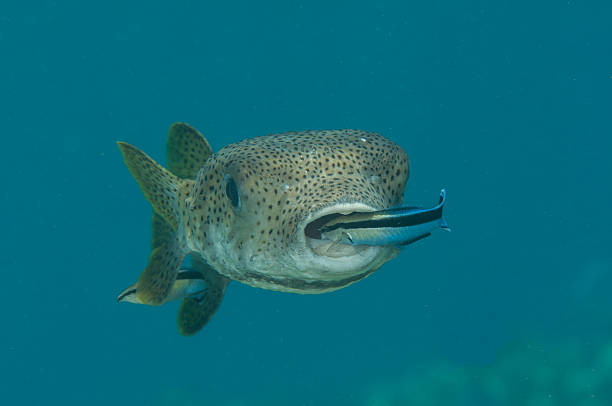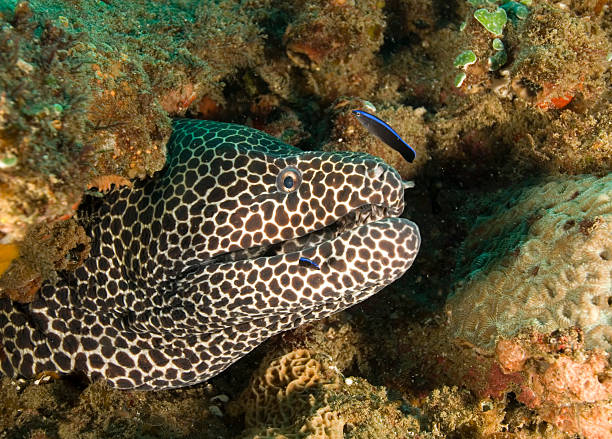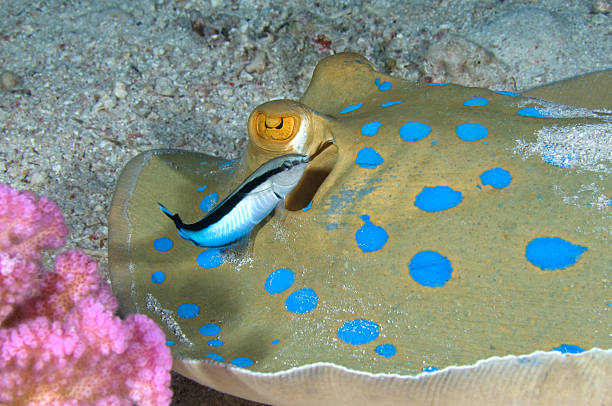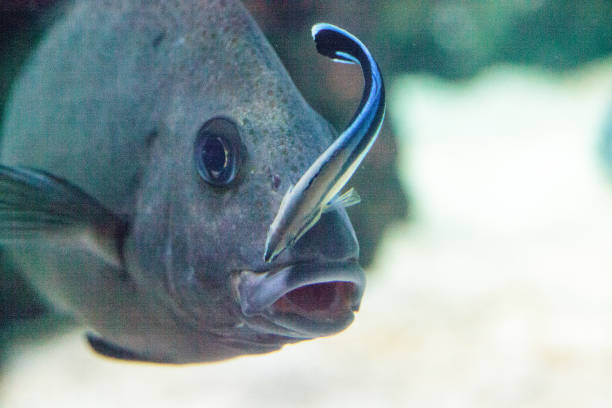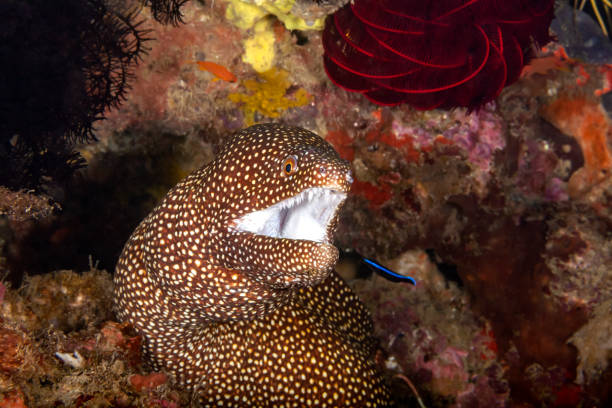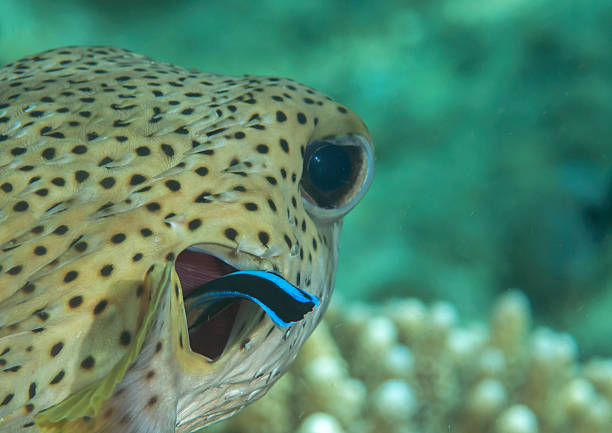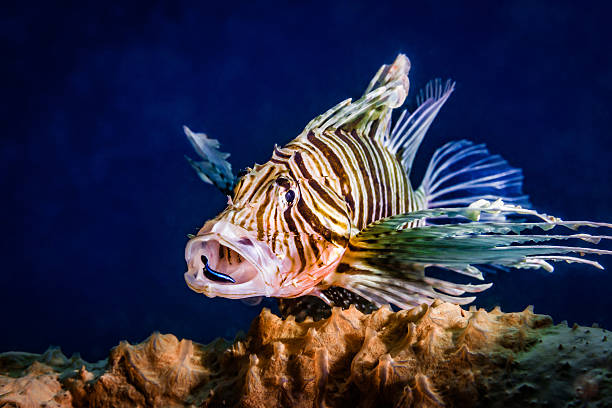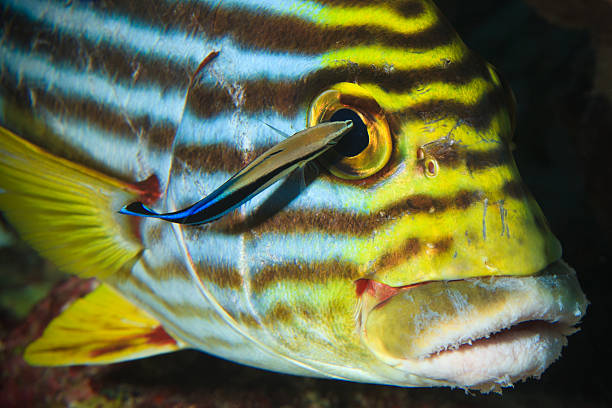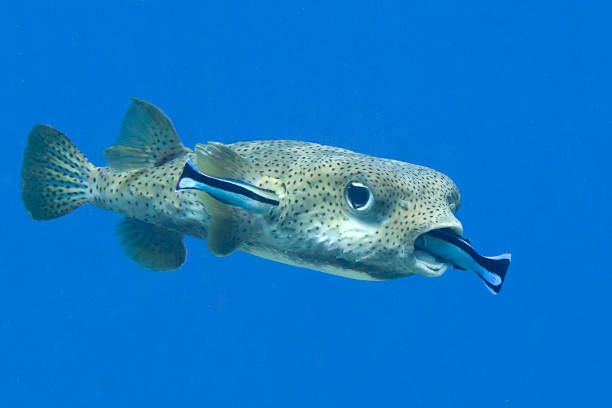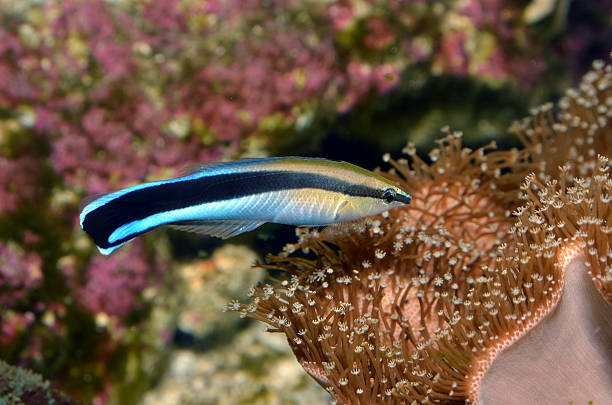
Labroides Dimidiatus Pictures, Images and Stock Photos
Browse 570+ labroides dimidiatus stock photos and images available, or start a new search to explore more stock photos and images.

Closeup of a pufferfish (diodon hystrix) being cleaned by cleaner fish (labroides dimidiatus) at cleaning station. Bunaken Island, Indonesia
Two Cleaner Wrasses on a Lunar-tailed Bigeye, one inside the Mouth. Tofo, Mozambique
Closeup of a pufferfish (diodon hystrix) being cleaned by cleaner fish (labroides dimidiatus) at cleaning station. Bunaken Island, Indonesia
Closeup of brain coral with blue cleaner wrasse (Labroides dimidiatus) for texture and pattern background. Taken underwater in the Florida Keys
Labroides dimidiatus(Cleaner Wrasse)
Laundry wash and clean service thin flat icons vector set
Great or Giant Barracuda (Sphyraena barracuda) having its mouth cleaned by two Cleaner Wrasses (Labroides dimidiatus). Photo taken in Tulamben, Bali, Indonesia.
A cleaning Station in Sipadan Island
Underwater macro photo of tropical coral reef fish in the Marshall Islands. Multicolor Cleaner Wrasse (Labroides pectoralis).
High pressure washer gun, car wash water gun stock illustration
Moorish Ideols Zanclus cornutus occurs in tropical and subtropical Indo-Pacific in a depth range from 5-182m, max. length 23cm. Abundance of encrusted life, soft and hard corals, ascidians, hydrozoans and sponges. North Kri Island, Raja Ampat, Indonesia, 0°33'15" S 130°41'25" E
Cleaner Wrasse in a reef
This sandy area is very exposed, that is why there are so many white spots to see, it's the sand, awhirled by the strong current. Anthias fishes dominate the scenery: Jewel Fairy Basslet Pseudanthias squamipinnis, Threadfin Anthias Pseudanthias huchtii and Redfin Anthias Pseudanthias dispar There are more fish species as Bluestreak Cleaner Wrasse Labroides dimidiatus, Clark's Anemonefish Amphiprion clarkii, Weber's Chromis Chromis weberi, Threespot Dascyllus Dascyllus trimaculatus, Scaly Chromis Chromis lepidolepis. There are soft corals like Pumping Xenia Coral Xenia elongata and Sinularia sp. Fingercoral and hard corals like Bubble Honeycomb Coral Euphyllia ancora and Boulder Brain Coral Colpophyllia Natans, a lot of Bubble Tip Anemone, Entacmaea quadricolor, the home of these Clark's Anemonefishes. East Side of Mauan Island, Komodo National Park, 8°33'31.2587" S 119°38'5.6142" E at 6m depth
The small island Friwenbonda, a coralline limestone block of about 700m length is covered with small mangrove trees. The washed-out overhanging limestone is a protected area for a lot of marine species.
Saddled Butterflyfish Chaetodon ephippium occurs in tropical Indo-Pacific from Sri Lanka to New South Wales, Australia in lagoons and seaward reefs to a depth of 30m, adults often in pairs, max. length 30cm. Bluestreak Cleaner Wrasses Labroides dimidiatus usually occurs in pairs in the tropical Indo-Pacific in a depth range from 1-40m, usually 1-30m, max. length 14cm. The species creates 'cleaning' stations to which fishes come to have crustacean ectoparasites and mucus removed. Cleaning intensity is not related to client size or commonness. Even hands of divers will be cleaned if presented to the cleaning station! Palau, Micronesia, 7°7'12.889" N 134°16'10.75" E at 10m depth
Millepora Fire Corals are not true corals but more closely related to Hydra and other hydrozoans, making them hydrocorals. They make up the only genus in the monotypic family Milleporidae. Acropora corals on top. A lot of fish species: Sea Goldies Pseudanthias squamipinnis, Threadfin Anthias Pseudanthias huchti, Threespot Dascyllus Dascyllus trimaculatus, Tropical Striped Triplefin Helcogramma striatum, Eastern Triangular Butterflyfish Chaetodon baronessa, Pale-tail Chromis Chromis xanthura, Sergeant-Major Abudefduf vaigiensis, Klein's Butterflyfish Chaetodon kleinii, Bluestreak Cleaner Wrasse Labroides dimidiatus and some more. West side of Moyo Island, North of Sumbawa, Indonesia, 8°15'41.89" S 117°29'12.25" E at 7m depth
Reticulated Dascyllus Dascyllus reticulatus occurs in the Eastern Central Indian Ocean to Western Pacific, but not in Hawaii, max. length 9cm. The species inhabits branching coral heads, where the entire school can hide in a blink of an eye. Not easy to get a photo before it happens! A Blackspot Cleaner Wrasse Labroides pectoralis and some female Sea Goldies Pseudanthias squamipinnis over the corals, an Orange-lined Triggerfish Balistapus undulatus below. Pantar Strait, Pura Island, Indonesia, 8°18'58.199" S 124°22'2.658" E at 2m depth
Cleaner Common Wrasse (Labroides dimidiatus) in Japan
This sandy area is very exposed, that is why at the left there are so many white spots to see, it's the sand, awhirled by the strong current. Bubble Tip Anemone Entacmaea quadricolor, Pumping Xenia Coral Xenia elongata and Sinularia sp. Fingercoral dominate the scenery. Many fish species to see: Jewel Fairy Basslet Pseudanthias squamipinnis, Threadfin Anthias Pseudanthias huchtii, Bluestreak Cleaner Wrasse Labroides dimidiatus, Clark's Anemonefish Amphiprion clarkii, Tomato Anemonefish Amphiprion frenatus, Threespot Dascyllus Dascyllus trimaculatus, Ternate Chromis Chromis ternatensis and Moonwrasse Thalassoma lunare. East Side of Mauan Island, Komodo National Park, 8°33'31.2587" S 119°38'5.6142" E at 6m depth
Cleaning service Illustration concept. Can use for web banner, infographics, hero images. Flat illustration isolated on white background.
A lot of nervously feeding fishes -- the reason: As the Sergeant-Majors Abudefduf vaigiensis are spawning, almost all other fishes try to catch as much food as possible in the shortest possible time: Moonwrasse Thalassoma lunare, Sunburst Butterflyfish Chaetodon kleinii, Yellow Chromis Chromis analis, Dianas Hogfish Bodianus Diana, Scaly Chromis Chromis lepidolepis, Pale-tail Chromis Chromis xanthura, Threespot Dascyllus Dascyllus maculatus, Crown Squirrelfish Sargocentron diadema and at least one species still eating parasites from other fishes: Bluestreak Cleaner Wrasses Labroides dimidiatus. The rope in the background holds a bubu, a traditional fish trap deeper down. Pantar Strait, West Coast of Pantar, Indonesia, 8°17'7.21" S 124°18'16.77" E at 18 m depth
Closeup of a pufferfish (Diodon hystrix) being cleaned by cleaner fish (Labroides dimidiatus) at cleaning station. Bunaken Island, Indonesia
Coral reefs are the one of earths most complex ecosystems, containing over 800 species of corals and one million animal and plant species. Here we see two Cleaner Wrasse, (Labroides dimidiatus) cleaning Parrotfish (Scarus niger). The Wrasse pick parasites off the Parrotfish to feed on them, which the Parrotfish allows for grooming purposes. A perfect demonstration of a symbiotic relationship. Parrotfish are hermaphroditic and usually transform from female to male at some point in their life. Image taken whilst scuba diving at Phi Phi island, Krabi, Thailand.
Cleaner Wrasse fish isolated in white background. Labroides Dimidiatus
FIFO, porcupine pufferfish (diodon hystrix) being cleaned by two cleaner fish (labroides dimidiatus) at cleaning station , Bali, Indonesia
Sweetlips and thousands of small glassfish around a coral covered underwater structure
Animal Character EPS10 File Format
Cleaner wrasses greet visitors in an effort to secure the food source and cleaning opportunity with the client in a mutualistic relationship.
washing, cleaning, dirty, car, clean
A common Reef Octopus (Octapus cyanea) is waiting in the shallow coral reef in Phi Phi Archipelago, Andaman Sea, Krabi, Thailand. Experts at camouflage they have the ability to change colour to blend in with their surroundings to avoid predation, as seen here. This makes them extremely difficult to find and photograph. Image taken whilst scuba diving.
Coral encrusted stairs on an underwater wreck
Closeup of a pufferfish (diodon hystrix) being cleaned by cleaner fish (labroides dimidiatus) at cleaning station. Bunaken Island, Indonesia
A cleaner fish and Bumphead Parrotfish in Sipadan Island in Malaysia
The bluestreak cleaner wrasse, Labroides dimidiatus, is a small fish that is found in tropical and subtropical waters around the world. It is a member of the family Labridae, which includes wrasses, parrotfishes, and blennies. The bluestreak cleaner wrasse is a small fish, typically growing to be about 6 inches long. It has a slender body and a long, pointed snout. The body is blue with a white stripe running down the middle. The fins are also blue, with yellow markings. The bluestreak cleaner wrasse is a cleaner fish. This means that it eats parasites and dead tissue from the skin of other fish. The bluestreak cleaner wrasse sets up a "cleaning station" on a coral reef or other hard surface. Fish that need to be cleaned will swim to the cleaning station and allow the bluestreak cleaner wrasse to eat the parasites and dead tissue from their skin. The bluestreak cleaner wrasse is an important part of the coral reef ecosystem. It helps to keep the fish healthy by removing parasites and dead tissue. This helps to prevent the spread of disease and keeps the fish healthy and strong.
Symbiotic cleaner wrasse cleaning blue spotted stingray.
Colored kitchen napkins and colorful sponges on a blue background. cleaning products for home work
Many spotted sweetlips or harlequin sweetlips ( Plectorhinchus chaetodonoides ) cleaned by cleaner fish ( labroides dimidiatus) at cleaning station , Bali, Indonesia
Cleaner fish (bluestreak cleaner wrasse) and black parrotfish in Red Sea, Egypt. Close-up, side view. Amazing cleaning symbiosis in nature. Colorful coral reef in the ocean. Rare underwater shot.
Bluestreak cleaner wrasse Labroides dimidiatus does its job and attends to a larger fish on a tropical coral reef.
cleaner wrasse cleans yellow tang
Closeup of a pufferfish (diodon hystrix) being cleaned by cleaner fish (labroides dimidiatus) at cleaning station. Bunaken Island, Indonesia
head of massive honeycomb moray eel with blue cleaner wrasse in attendance
Symbiotic cleaner wrasse cleaning blue spotted stingray.
Bluestreak cleaner wrasse Labroides dimidiatus does its job and attends to a larger fish on a tropical coral reef.
The moray eel tears its mouth wide open to give the cleaning fish access
loseup of a pufferfish (diodon hystrix) being cleaned by cleaner fish (labroides dimidiatus) at cleaning station. Bunaken Island, Indonesia
Red Lionfish (Pterois volitans) having its mouth cleaned by a Bluestreak Cleaner Wrasse (Labroides dimidiatus).
oriental sweetlip & cleaner wrasse in Maamigili Beyru - South Ari Atoll
Porcupine pufferfish (diodon hystrix) being cleaned by cleaner fish (labroides dimidiatus) at cleaning station , Bali, Indonesia
